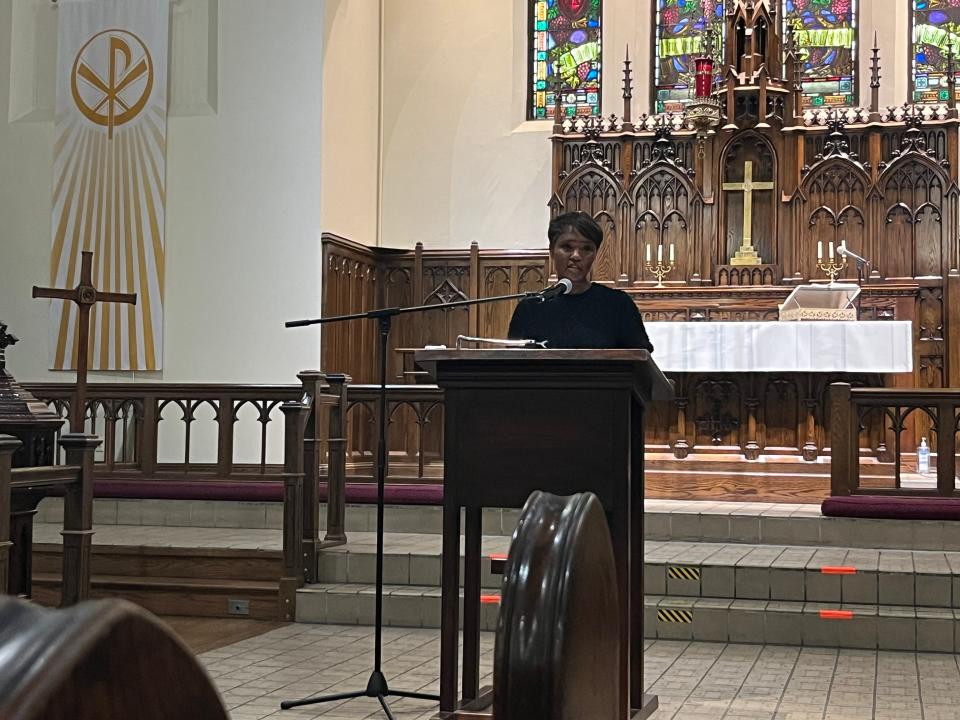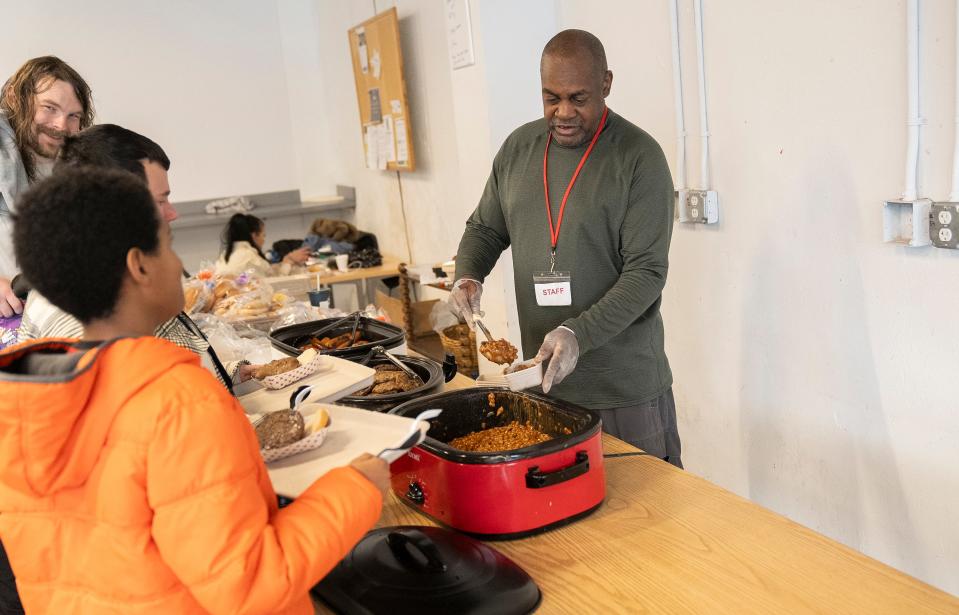'We have run out of housing': Homelessness is at an all-time high again in Columbus
The number of unhoused people living in Columbus and Franklin County continues to rise, hitting an all-time high for the second year in a row.
The Community Shelter Board's annual "point-in-time" count, which took place on Jan. 25, found there were 2,380 people experiencing homelessness locally — up 1.8% from the 2023 count of 2,337 people.
The 2023 Franklin County count was the single largest increase, 22% above the 1,912 people counted the year before, and an all-time high of people experiencing homelessness.
But this year's total is a new all-time homeless total.

It's not a surprise to local officials, as Shannon Isom, president and CEO of the Community Shelter Board, said she believed the numbers would rise again this year due to people telling her about constant need. She thinks they will continue to rise.
Still, she said "we can solve this."
"We have the right people. We have the right energy. We have the right mindset. We have the resources," Isom said.
Isom and other officials gathered at First English Lutheran Church on the Near East Side Tuesday morning to release the results of the count and issue a call to action to the community to solve the issue of homelessness.
"We have run out of housing," Isom said.
She also mentioned apartment communities that have recently stopped offering affordable units, such as Latitude Five25, Galloway Village Apartments, Colonial Village, Sandridge Apartments and others.

"The trend continues. People, without warning, will lose their homes and have nowhere to go," she said. "We have to break down this archetype that we think we know what homeless people look like. We do not."
What's needed, Isom said, is a system that can quickly respond to people losing their housing with short notice and get them in transitional housing. The shelter board wants to buy hotels to start to do that and also offer housing, not shelters, to those in need from the start, she said.
"We're all a little flat-footed that this level of growth was not going to affect homelessness," she said of the region's growth in jobs and development. "Now we know. We must invest in more permanent supportive housing."
The numbers from the count show that chronic homelessness is rising due to the Columbus-area's affordable housing crisis, in part because of a low number of available apartments, higher rents and slow development of affordable housing.
The release of the homelessness count numbers comes out at a time when eviction filings are at a 20-year high, people from at least three more apartment complexes have been or are being forced by the owners to vacate, and the city has a shortage of 52,694 rental units for people who need affordable housing. Only about one-fourth of extremely low-income families or individuals are able to get housing in Columbus, according to a national report released in March.
There are only 26 affordable units per 100 extremely low-income renters in Columbus, according to the report by the National Low Income Housing Coalition (NLIHC) and the Coalition on Homelessness and Housing in Ohio (COHHIO).
What is the annual point-in-time count?
During the annual homeless count, volunteers talk to people at shelters across Franklin County from 5 a.m. to 5 p.m. on a day in January.
The Community Shelter Board leads the count with help from 20 other agencies, and it is conducted as part of an effort in more than 3,000 American cities. The numbers, likely an undercount as the population is hard to locate, are reported to the U.S. Department of Housing and Urban Development and can determine funding and strategy to reduce homelessness and track progress.
The numbers show that family and chronic homelessness are on the rise, while fewer young people, domestic violence survivors, and veterans are experiencing homelessness than in years past.
Of the 2,380 unhoused people counted this year, 1,866 were staying in shelters or transitional housing. That's a 1% increase from how many had similar housing situations last year. Another 514 people were living outside or in other places not meant to be lived in, a 3% increase from 2023.
Who is experiencing homelessness in Columbus, Franklin County?
Men account for 57% of unhoused people locally, and 53% of unhoused people are Black, according to the count.
The numbers also include 230 families who are unhoused, a 5% increase from 2023. Most of those families — 225 —were living in shelters or transitional housing in January, during this year's count. Five other families were living in inadequate conditions.
The number of single adults who are unhoused also increased since last year, with 1,615 experiencing homelessness in 2024, a 2.5% increase from 2023. But fewer single adults were unsheltered — 490 — than last year, and 1,125 were in shelters or transitional housing, a 4% increase from 2023.
Still, there was a nearly 50% increase from 2023 to 2024 in those who are unhoused and experiencing chronic or repeated homelessness. Of those 224 people representing the 47% increase, 150 were living in inadequate conditions, such as vehicles or garages, and 74 were using shelters.
More single adults are getting access to shelter and transitional housing, the shelter board said, which points to the effectiveness of its expansion of access to shelter beds and warming center beds.
What can be done to stop the increase in homelessness?
The Community Shelter Board detailed actions that need to be taken to reduce homelessness going forward.
They include increasing shelter capacity designed for families to have their own spaces, such as in hotels; investing in permanent supportive housing; putting in place a diversion model for single adults so they don't become homeless over and over again; adding rapid rehousing programs; and advocating for policy changes around zoning, affordable housing, eviction, tenant protection and more.
There is a projected 86% increase in unsheltered homelessness over the next five years, according to the shelter board.
dking@dispatch.com
@DanaeKing
This article originally appeared on The Columbus Dispatch: Homelessness rises in Columbus; count of unhoused hits new high

